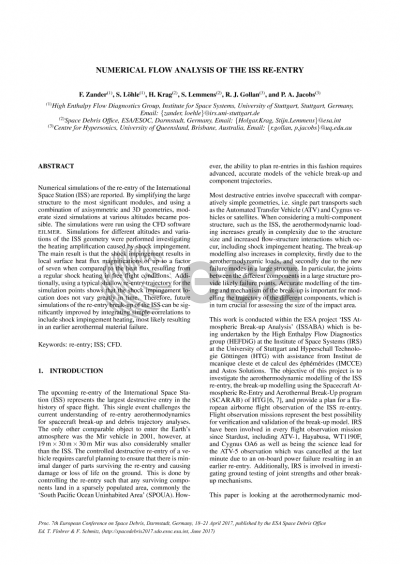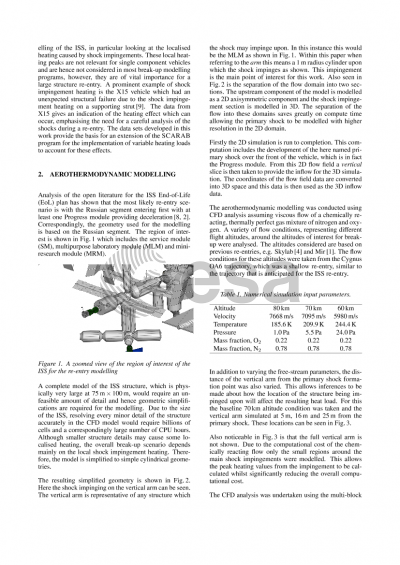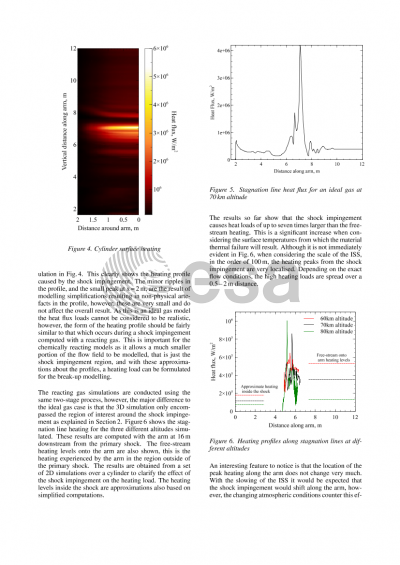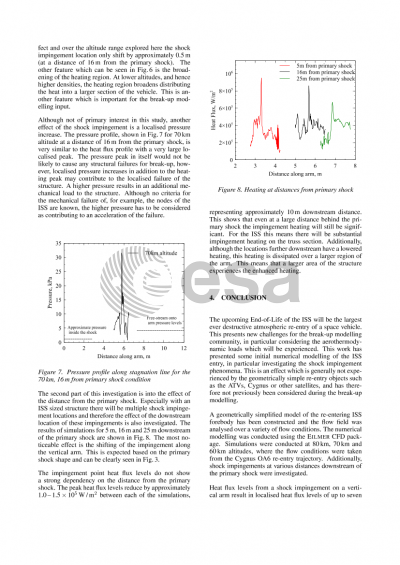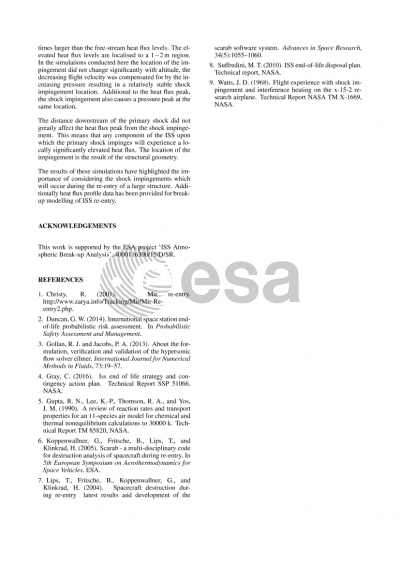Document details

Abstract
A carefully evaluated plan for the re-entry of the International Space Station (ISS) is critical to ensure that there is minimal risk of debris related danger. The analysis of the debris footprint requires significant analysis of the break-up processes which form the debris fragments. Within the ESA project `ISS Atmospheric Break-Up Analysis' this problem is being addressed by conducting CFD simulations to investigate the aerodynamic heating which can then be used as an input for the space debris break-up tool Scarab{Lips_2004}. This paper looks into the difficulties of conducting the CFD analysis of such a large and complicated structure and presents the results of the simulations.
Although the ISS will re-enter the atmosphere on a shallow, and comparatively slow, trajectory the velocity will still be approximately 7--8km/s when entering the upper atmosphere where aerodynamic heating and forces will start becoming significant. This means that thermochemistry will play an important role in the flow analysis, however, radiation and thermal non-equilibrium can be omitted from the analysis. In this work the compressible flow solver Eilmer{Gollan_2013}, a code specialising in hypersonic flows, was used. The 11-species, 20 reaction chemistry scheme of Gupta et al.{Gupta_1990} was used.
The primary difficulty in conducting computations of the ISS flow field is the physical size. The ISS is a massive structure, in the order of 75m long and 100m wide, with a highly complex shape. To compute the entire structure would require a currently unfeasible amount of cpu hours. To reduce this only a subset of the structure is simulated in detail, as the most probable re-entry scenario is utilising a Progress module, this, along with the corresponding service module (SM), docking compartment (DC) 1 and mini-research module (MRM) 2 are geometrically simplified and modelled. This approach provides parametric data about the heat loading and shock-shock interactions occurring on the forward structure. This approach is advantageous as the objective is to provide Scarab with input data and the heat flux results can be adapted on other locations depending on the impinging flow and shock-shock interactions.
The first computations were conducted for a 7.8km/s flight speed at 70km altitude. The simulations are conducted in two components, firstly a 2D axisymmetric component to reduce computational time, the results of which are supplied to a 3D model including the MRM. Due to the geometry the MRM can not be modelled in 2D requiring the full 3D model which is computationally expensive, however, this produces the shock-shock interactions which are of particular interest for the Scarab modelling. A cross section of the geometry and resulting flow field is shown in Fig.{fig:cfd} and the resulting heat flux on the curved surface of the MRM is shown in Fig.{fig:cyl_heat_flux}.
These results highlight the importance of the shock-shock interactions showing that the heat fluxes are amplified by approximately an order of magnitude at the shock impingement locations. This information is critical for the break-up analysis as this will play a significant part in determining where the structural failures will occur.
Important factors which will be addressed in the full paper are the locations of the shock impingements and the effects due to the fact that the flow field structure will change with trajectory. This will also lead to the discussion of the next steps to address the overall problem of modelling the ISS re-entry.
Preview
